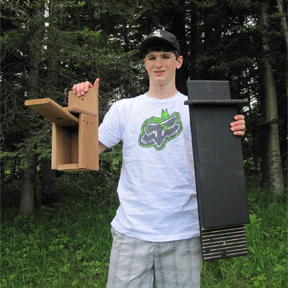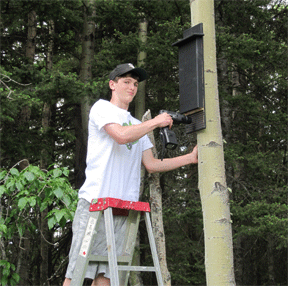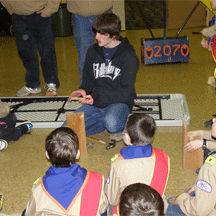2011 Sherwood Park, Alberta, Canada
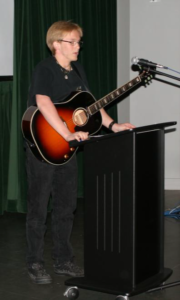
Scott Deshane was a finalist in the 2011 Caring for our Watersheds Contest. Avid singer/songwriter, Scott wanted to use his talents to promote people’s awareness of and care for the environment. Scott’s Watershed Song was written just for the CFW contest. This is what Scott had to say about it:
“Music has been proven to help not only raise awareness of certain topics, but also remind [people] to avoid making bad decisions. If a song is “stuck” in a person’s head, they will repeat the lyrics over and over to themselves, and this will subconsciously help them remember something. If a song were created with lyrics that could remind a person of the dangers of harming the environment and that song were to stay with the person, then they would avoid harming watersheds.”
“The lack of awareness of the environment is definitely the supreme issue” – Scott Deshane
Set to a series of photos of water, this song will inspire you to Care for your Watershed! (And you would never guess the artist is in High school!)
The video can be seen on the Battle River Watershed Alliance’s YouTube channel at: http://youtu.be/l-c1XFjLLF8

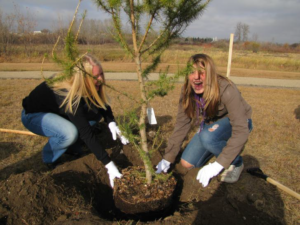
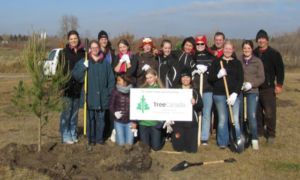
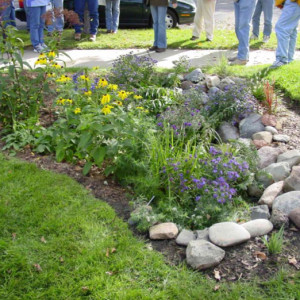

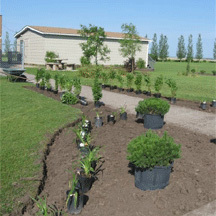
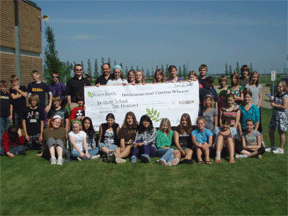
 Kysha LaPlante and Dan-Elle Kramchynski from Mr. Kasun’s Grade 8 class at St. Edward School won first prize in the grade 7 to 9 category of the Caring for our Watersheds competition. The project plan developed by these two students was to decorate and supply rain barrels to participating schools in the Greater Saskatoon Catholic School Division. A total of 10 schools (plus their own school) were eager to participate in the project. The students worked together and managed to get the majority of the materials supplied in-kind from various suppliers, including the poly barrels themselves. As a result, the students only requested $150.00 from Nutrien to complete their project. Nutrien was delighted to present these students with the funds required.
Kysha LaPlante and Dan-Elle Kramchynski from Mr. Kasun’s Grade 8 class at St. Edward School won first prize in the grade 7 to 9 category of the Caring for our Watersheds competition. The project plan developed by these two students was to decorate and supply rain barrels to participating schools in the Greater Saskatoon Catholic School Division. A total of 10 schools (plus their own school) were eager to participate in the project. The students worked together and managed to get the majority of the materials supplied in-kind from various suppliers, including the poly barrels themselves. As a result, the students only requested $150.00 from Nutrien to complete their project. Nutrien was delighted to present these students with the funds required.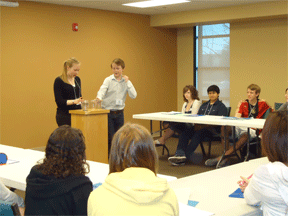
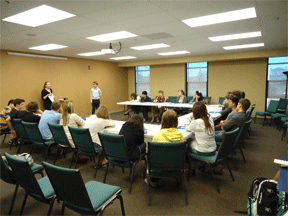 students and their teachers explaining what they do, why they do it, and why they enjoy their involvement in the project. The group of students was then split up into two groups to discuss the basics of water usage, conservation, Calgary’s Watershed and sustainability. After a quick snack the students were back to activities which included ‘water’ Family Feud, learning about the ‘water cost’ of daily items and an interactive guessing game where countries were compared based on their water usage.
students and their teachers explaining what they do, why they do it, and why they enjoy their involvement in the project. The group of students was then split up into two groups to discuss the basics of water usage, conservation, Calgary’s Watershed and sustainability. After a quick snack the students were back to activities which included ‘water’ Family Feud, learning about the ‘water cost’ of daily items and an interactive guessing game where countries were compared based on their water usage.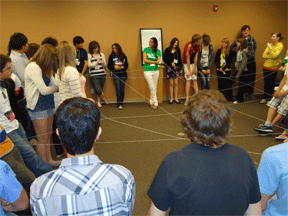
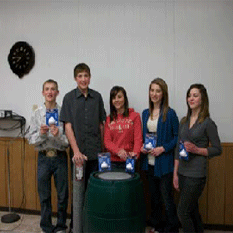
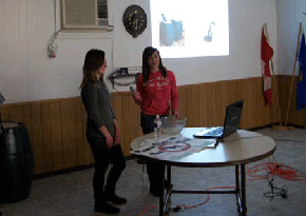 that
that